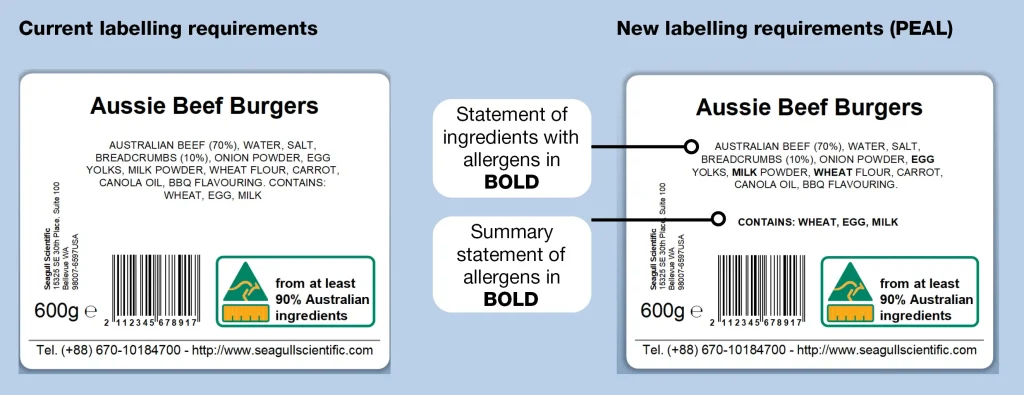
What’s Changing?
The Australia New Zealand Food Standards Code has introduced updated requirements for how allergens must be labelled on food products. These changes, developed through FSANZ Proposal P1044 – Plain English Allergen Labelling, aim to make it simpler for consumers to identify potential allergens quickly and make safer food choices.
What’s Required?
Here’s what you need to know about the new requirements:
- Specific Format and Location: Allergen information must now be displayed in a specific format and location on food labels.
- Plain English in Bold Font: The information must use simple, plain English terms and be printed in bold font. This makes it easier to spot amidst other text on the packaging.
For people with allergies or intolerances, these changes are a game-changer. Being able to find allergen information more quickly and easily means less time scrutinizing labels in the grocery store and more confidence in making safe food choices.
What Needs to Be Declared?
Certain foods and ingredients are known to cause allergic reactions, so the Food Standards Code now requires them to be declared using specific names. These include: wheat, fish, crustacean, mollusc, egg, milk, lupin, peanut, soy, sesame, various nuts, certain cereals and sulphites.
How Should Declarations Be Made?
Declarations must be made clearly and prominently on the label:
Statement of Ingredients: Bold font must be used for allergens, and the font size should be no smaller than other listed ingredients.
Statement of Ingredients: Bold font must be used for allergens, and the font size should be no smaller than other listed ingredients.
Exemptions and Precautions
Some foods may be exempt from allergen labelling if they’re processed in a way that makes them safe for allergy sufferers. Additionally, precautionary allergen labelling, like “may contain” statements, is not regulated by the Food Standards Code.
These new regulations are designed with your safety and convenience in mind. So, the next time you’re scanning food labels, keep an eye out for these clearer, more straightforward allergen declarations. Making informed food choices just got a whole lot easier!
If you need new labels that meet PEAL standards, contact us on 1300 657 633 today.
